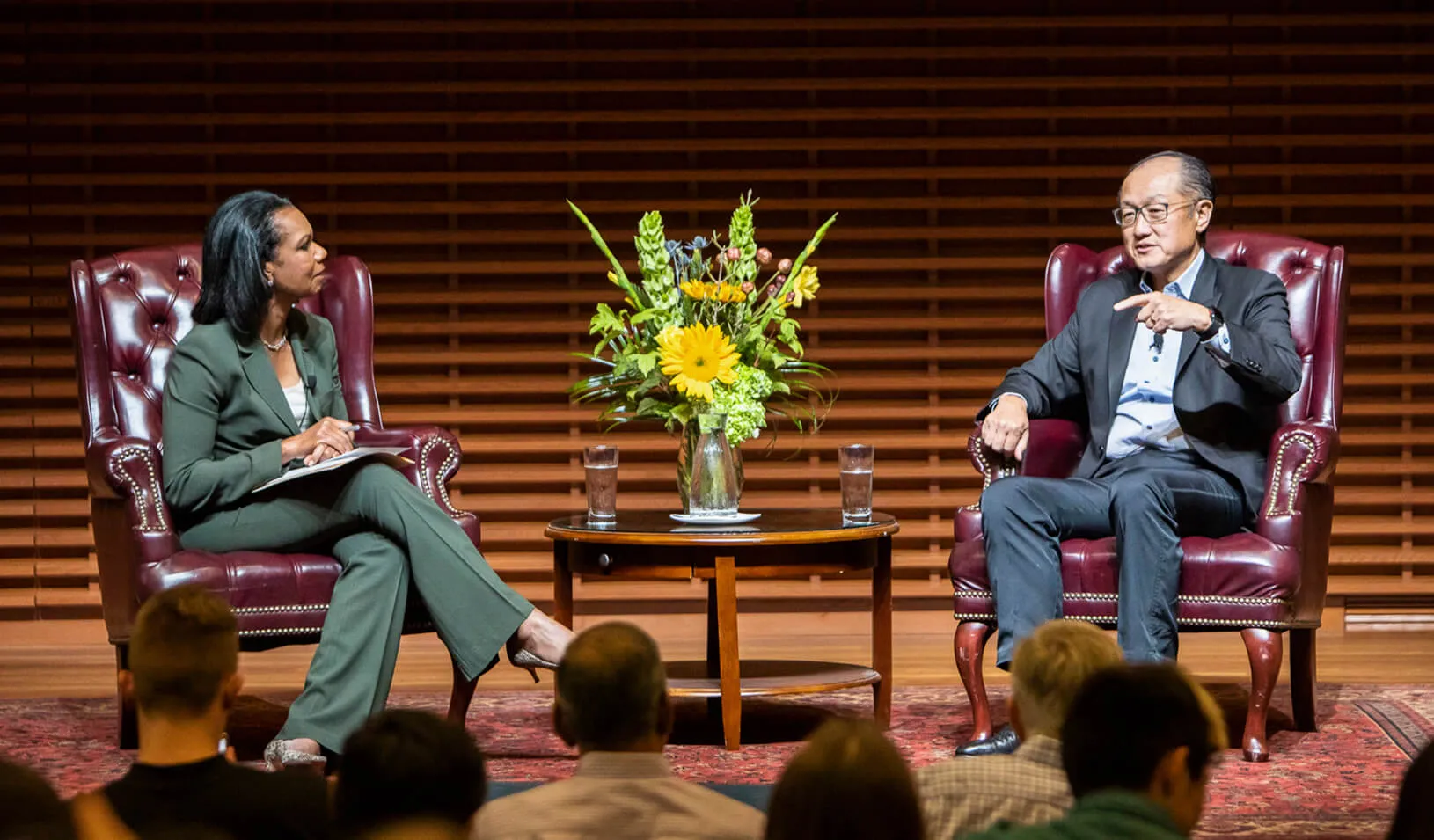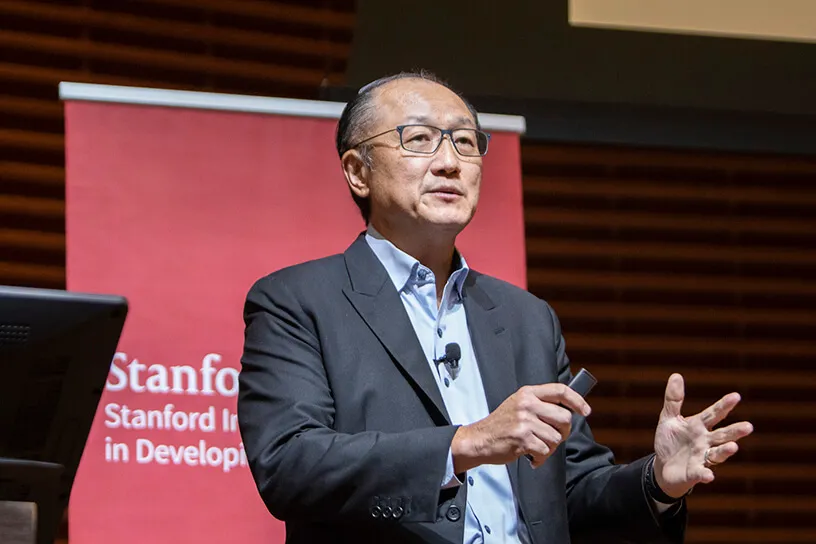World Bank President: Ending Poverty Through Technology and Finance
Building digital economies for inclusive growth, fostering resilient societies, and investing in people are crucial, says Jim Yong Kim.
October 11, 2018
World Bank Group President Jim Yong Kim speaks with Stanford Professor Condoleezza Rice. | Elena Zhukova
How to end extreme poverty and boost prosperity for the world’s most vulnerable populations was the topic of a talk delivered by World Bank Group President Jim Yong Kim on Oct. 2 at Stanford University.
Following Kim’s talk was a conversation with former U.S. Secretary of State Condoleezza Rice, who is the Denning Professor in Global Business and the Economy at Stanford Graduate School of Business.
In his opening remarks, Kim laid out three crucial steps the World Bank is taking to reach its goals to end extreme poverty by 2030 and boost shared prosperity.
The first step Kim proposed is to grow the economy.
“But in our case, we want equitable, sustainable, economic growth,” Kim said. “You have got to build the economy if you want to create the jobs to create the opportunity.”
The second, which is a new area for the World Bank, is to foster resilience.
Kim laid out three crucial steps the World Bank is taking to reach its goals to end extreme poverty by 2030 and boost shared prosperity. | Elena Zhukova
“Resilience against climate change, resilience against pandemics, resilience against migration and refugees. And also, resilience for individuals through social protection programs,” said Kim, which brought him to lay out his third ambition: invest in people.
“The health and education of people is far more significant for economic growth than we ever appreciated,” said Kim.
But in the midst of all this, said Kim, is the role of technology, which he sees as a way to help the World Bank move forward in achieving its goals.
For example, in developing countries carbon pollution has been both a health and environmental issue. While advancements have been made in cleaner energies like solar power, the issue of an affordable storage option remains.
Technological innovations that create affordable energy storage could be a game-changer, he said.
Kim then turned his attention to other issues developing nations face, such as pandemics and famines. Could this investment model help address these urgent problems?
“Why can’t we do something that will bring funding upstream that can prevent famines in the first place?” Kim asked. He said market tools exist that can ease the financial costs associated with solving these crises, such as insurance instruments that Kim said were successful when dealing with the Ebola crisis in the Congo.
“But we didn’t know when a famine was about to happen,” said Kim. In an age of technological innovations such as artificial intelligence, can there be ways to predict when a famine might happen and intervene there?
The World Bank is partnering with several large technology firms and also with Marshal Burke, an assistant professor in the Department of Earth System Science and a fellow at the Center on Food Security and the Environment at Stanford University, and his students to come up with an artificial intelligence system that could predict up to six months ahead of when a famine might happen.
Kim also discussed concerns about automation.
“What we know is that certain things are definitely changing. Intensive, cognitive and social skills are much more in demand,” said Kim, citing the demand for app developers in India and data laborers in China. These are complicated jobs, he said.
That’s why education and investing in people are so critical, he said.
“What we want in every single country on Earth is to begin debating the quality of their investment in people,” said Kim, who is launching a new Human Capital Index that he says will rank countries in terms of their investment in human capital. The focus will be measuring only outcomes, like education.
“We have got to do something to change what the outcomes really are,” Kim said.
Kim closed his talk by asking for people who are developing technologies to think about the philosophy of technology. You have to think about how it is going to work for the poor, he said.
“Unless you start thinking about how it might be applied to reduce poverty and reduce inequality, you will likely be in a place that makes it difficult for poor countries to take advantage of it.”
The event was hosted by the Stanford Institute for Innovation in Developing Economies (aka Stanford Seed), a group of scholars working to end the cycle of global poverty.
— Melissa de Witte
This story was originally published on October 3, 2018 at Stanford News Service.
For media inquiries, visit the Newsroom.
Explore More
Alyssa Rapp, MBA ’05: What Matters to Me Now and Why

Catalyst: Too many students are missing school. This company hopes to fix that.

Hard Lesson: A Friend’s Insight Changed My Life
